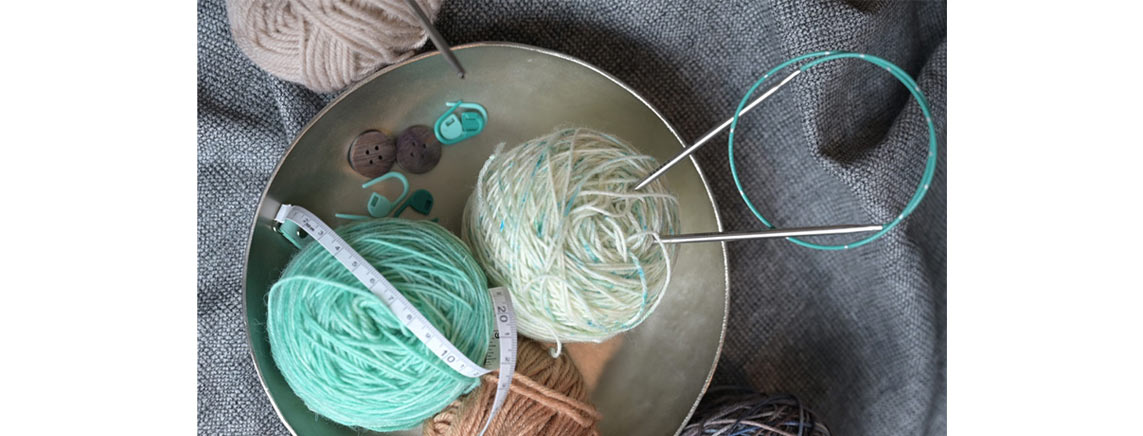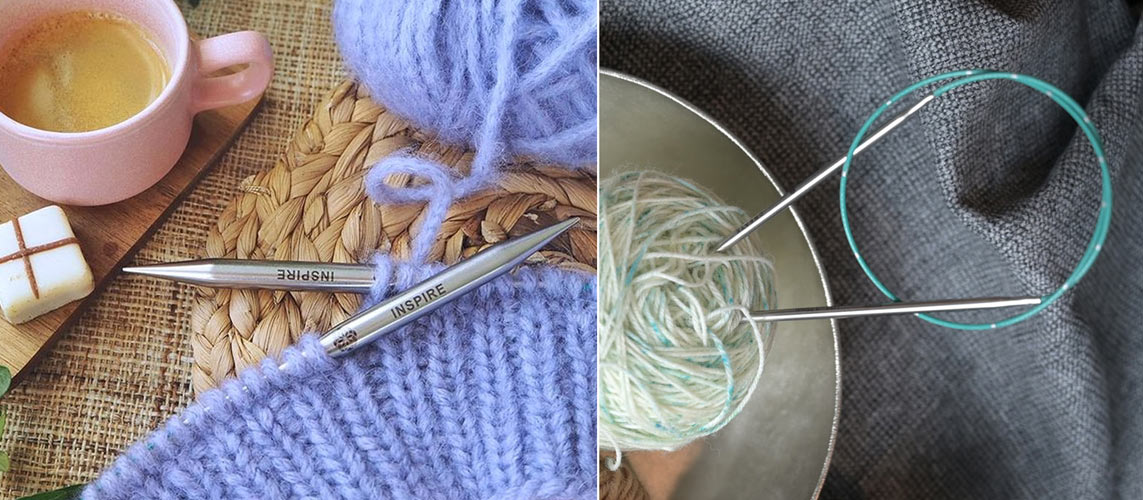Stocking Stitch known as Stockinette in US knitting terms is a basic stitch pattern used in knitting projects. Give any knitter knitting needles and most often you would see them knit a swatch of stocking stitch to test the needles. It’s usually abbreviated in a pattern as "St st". Many patterns don't explain it because they assume that a knitter is familiar with stockinette stitch. They are the basic combination of knit and purl stitches in alternate rows.
If you're a seasoned knitter, chances are you already understand the stitch and use it regularly. However, if you are a beginner, then you need to know what it is and how it works. The stocking (stockinette) stitch is a simple pattern of knitting one row, purling the next, and then repeating this process consecutively. Stocking stitch in the round circular knitting needles is a very relaxing way to knit. The reason being you enjoy the rhyme of knit and purl stitches along with the versatile benefits of circular needles. Next time you want to relax with some stress-free knitting, cast on some stitches on a circular needle and just knit a stocking pattern.
Stocking Stitch Basics
Stockinette stitch works with any number of stitches and all types of knitting needles (single-pointed, double-pointed, fixed circular as well as interchangeable circulars) and most importantly every type of yarn. The stitch patterns work for both odd and even numbers of stitches.
The stitch pattern has a “right” side and a “wrong” side. The right side faces out and is made up of knit stitches that look like little V shapes. The wrong side is made up of purl stitches that look like little bumps.

For knitting back and forth, you need to turn the project after each row. You knit the first row then turn the project. Next row you will purl all the stitches and then turn the row. You will continue this until your pattern suggests or you have achieved the desired length.
When working in the round on circular knitting needles, the stitch structure calls for knit stitches every stitch of every round. Since working in the round is basically creating a spiral, there is no need to purl any of the stitches. When working this way, you do not change the direction of your knitting.
Versatile use for Stocking Stitch
The stocking stitch along with the garter pattern is the most versatile knitted fabric. You find the stitch pattern in most basic patterns for sweaters, hats, scarves, etc.
- It is also the easiest pattern to increase and decrease stitches in knitting.
- Also, this simple pattern works best to frame cable stitches, intricate lace and even textured patterns.
- The stitch provides a great backdrop for embellishment. You can easily add colourful stripes or carry the alternate color up the interior or up the side if you are knitting back and forth. You can add designs by making duplicate stitches with a finishing needle on top of a finished piece. Beads and embroidery placed on top of the stockinette stitch can make a project more interesting.
Once you've had some practice, it is possible to follow the pattern without even paying attention while watching TV, chatting with friends or during travel.
Alternatively, there is a reverse stockinette stitch. This is made when the first row is purl stitches and the second is knit stitches. These rows continue to alternate. Often the reverse side, the purl side is what is seen as the front.
Drawbacks of the Stockinette Stitch
If you are knitting flat back and forth you will see that the stocking stitch curls on the edges. Many knitting projects and patterns use the curl as an advantage. For instance, for edging sock cuffs or creating curled scarves or even the neck of a sweater. Some yarns have this tendency more than others, but it is the structure of the stitch that is responsible.
If you want to avoid this, there are a few ways:
- Blocking the knitted fabric helps a bit, but it is the nature of the stitch to curl. After you’ve knit the project, block according to the yarn instructions.
- You can add a neat garter or seed stitch border, make an I-cord while knitting or later with a crochet hook.
- Alternatively, you can begin each row with a slipped stitch if the project is a flat piece.
- If it works add some pom-poms or fringes that add to the beauty of the fabric.
So, now that you have information on the stocking stitch, introduce it into your projects or design pieces with this one stitch. For your first projects, you can start with knitting a scarf or even a blanket. We have already discussed knitting a blanket on circular needles. Hats are fun and quick and will give you ample opportunity to master the stockinette stitch. And, if you want to try out complex patterns, you can go ahead with a sock knitting pattern.
Happy knitting!












